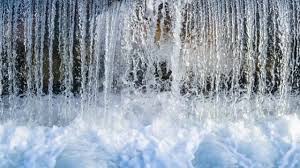Man has always known of the importance of water. Water is a diverse resource and ultimately the survival of man is centred on its availability.
In 1992, following the United Nations Conference on Environment and Development in Rio De Janeiro, it was decided that 22 March would become World Water Day. The purpose of the day is to raise awareness on the importance of water and sanitation.
Valuing Water
From an early stage in life, we are taught the importance of water. Television and radio advertisements broadcast on behalf of local water authorities remind us time and again to “save water” and that “water is life”.
No matter how many times we hear this, we often forget or downplay the importance of water. This year, however, the United Nations has set out to remind us of the value of water, that our well-being is rooted in this precious resource, and that we should, therefore, seek to value, preserve and save water.
The Right To Water
In 2010, through Resolution 64/292, the United Nations General Assembly explicitly recognised that water is a human right and that clean drinking water as well as sanitation are essential to the realisation of all human rights.
Under section 77 of the Zimbabwean Constitution, everyone has the right to food and water. The section states that everyone must have access to safe, clean and potable water and the government must ensure this within the limits of State resources.
There are relevant international commitments in this field that bind Zimbabwe. One of these commitments is in the United Nations Sustainable Development Goals. By SDG 6, we have pledged to achieve water and sanitation for all by 2030. Past performance suggests that it will be difficult to achieve that goal.
The Current Water Situation
Worldwide, the statistics are alarming. It is said that between 1.3 – 2 billion people in the world have no access to clean and safe drinking water. UNICEF states that:
· every 21 seconds a child dies from a water related illness
· 1 in 3 people have no access to safe drinking water.
The statistics for Zimbabwe are not encouraging. According to UNICEF, only 64% of Zimbabweans have access to water services.
Older Zimbabweans in the urban areas often say that back in the 1990s, they would hear of other countries that have no running tap water and would be astonished. They never thought that there would come a day where they would be living the reality of turning a tap and having it cough and strain in attempt to let out a few drops of water – or nothing at all.
The reality in Zimbabwe is that there are many urban neighbourhoods where running tap water is a thing of the past. Even in affluent neighbourhoods, there are places where people have not running water provided by their local authority in over two decades.
Those with pockets deep enough to do so have sunk their own personal boreholes or resorted to paying to have water trucked in by commercial water suppliers to be kept in bulk storage tanks.
Those less fortunate have resorted to either fetching water from the few City Council boreholes or relying on neighbours with boreholes. It has been reported by various news outlets and agencies such as WASH with great concern that women in areas such as Chitungwiza, Ruwa and Epworth, to name a few, can spend up to eight hours a day in water queues.
According to a recent study by UNICEF, up to 60% of Zimbabwe’s rural water supply is in disrepair whilst 30% of all urban water supply is lost due to ageing infrastructure.
Apart from this, it has now become common for local authorities to publish notices that their waterworks are out of order or that they have run out of the chemicals necessary to purify water to make it fit for human consumption. Although the average Zimbabwean has had to adapt, there is nothing normal about this situation.
Taking Responsibility
Just last week, on Tuesday 16th March in the National Assembly, Parliamentarians spent much of the afternoon’s sitting thoroughly debating and adopting a motion referring to the parlous urban water supply situation, the public health implications of the situation; and the obvious incapacity of local authorities to remedy it.
Hon Mushoriwa’s motion focussed on the deplorable living conditions brought about by inadequate water supply and sewerage services in the older pre-Independence high-density suburbs, originally designed for a fraction of their present populations.
It described the situation as “a time-bomb which may result in massive deaths due to the outbreak of diseases such as diarrhoea, cholera and typhoid” – caused by lack of sufficient water, faulty piping, inadequate sewerage systems, etc.
The remedial action the House decided on was for the Minister of Finance and Economic Development to allocate at least 2 per centum of the National Budget towards investment in new infrastructure to replace the dilapidated WASH [Water, Sanitation and Hygiene] systems in the older high-density suburbs concerned countrywide.
The National Assembly motion refers to only one aspect of a multi-faceted problem. The problem of ageing water and sewerage infrastructure aggravated by lack of maintenance is not confined to the high-density areas – it is common to the older developed areas of most cities and towns in Zimbabwe.
There are many other aspects. Greater Harare as a whole sorely needs a new supply dam not subject to the same pollution risks as the existing dams – yet serious implementation of the Kunzvi Dam project still seems as distant a prospect as it has been for decades. Just imagine what the good recent rains could have done towards filling the Kunzvi Dam had it existed. And so, and so on.
-Veritas Zimbabwe













